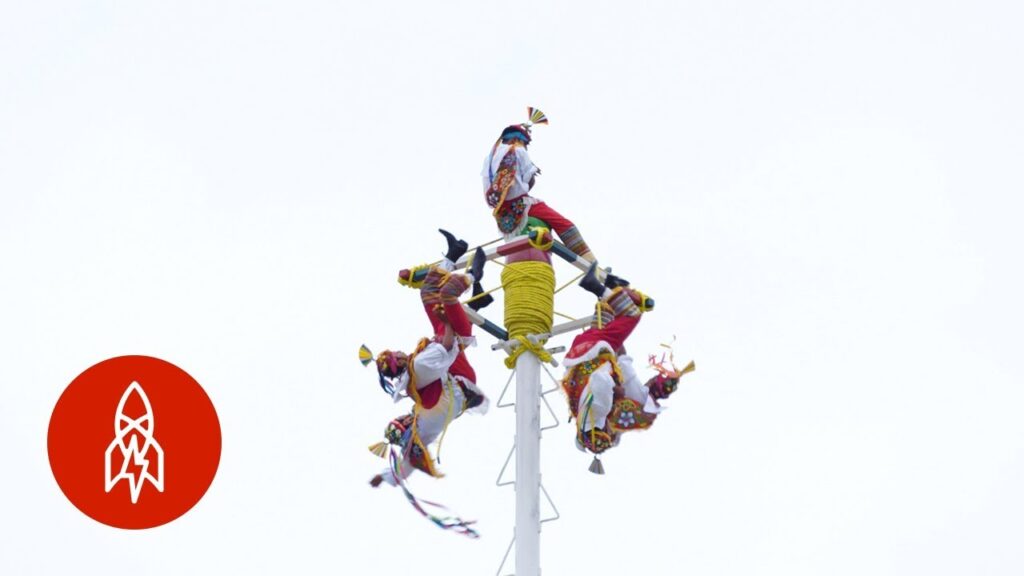Exploring the Heart of the Otomí Region: Traditions That Precede Halloween
Amidst the rugged terrain and lush landscapes of central Mexico, the heart of the Otomí region pulses with ancient traditions and cultural heritage that predate the festivities of Halloween by centuries. This indigenous group, renowned for their rich history and vibrant customs, invites a unique exploration into the festive rites and rituals that set the tone for the season. As we delve into the region, we’re met with a tapestry of cultural expressions that stand testament to the community’s enduring spirit.
Otomí villages are aflutter with activity as the end of October approaches, but not for the commercialized Halloween known to many. Instead, they prepare for ‘Día de Muertos’, the Day of the Dead, a time when the veil between worlds is believed to be the thinnest. Altars, or ‘ofrendas’, beautifully adorned with marigolds, candles, and treasured offerings become the centerpiece of the celebration, inviting the spirits of the departed for a night of remembrance and honor.
Further into the Otomí heartlands, one can witness the meticulous crafting of ‘alebrijes’, fantastical creatures carved from wood and painstakingly painted with intricate patterns. These colorful effigies, while part of a broader Mexican tradition, hold special significance within the Otomí culture, symbolizing the presence and guidance of ancestral spirits during the Days of the Dead festivities.
The cultural immersions don’t stop at visual arts; they extend into the realm of gastronomy. Otomí cooks prepare soulful dishes imbued with centuries-old culinary wisdom to welcome the deceased. Traditional recipes like ‘mole negro’, ‘tamales’, and ‘pan de muerto’ transcend mere nourishment, embodying comfort and celebration in every bite. These culinary staples provide a flavorful journey into the essence of the Otomí celebrations that so beautifully intertwine with, yet distinctly stand apart from, the Halloween season.
The Unique Celebration of the Day of the Dead in the Otomí Region
In the heart of Mexico, the Day of the Dead comes to life in a display of traditional festivities and heartfelt tributes unique to the Otomí communities. This indigenous group, with its deep spiritual connections to ancestry and nature, observes the holiday with a vibrant blend of ancient customs and living culture. As the end of October approaches, the air fills with the sweet smell of marigolds – the cempasúchil, believed to guide the spirits back to the world of the living with their bright colors and intoxicating fragrance.
The Otomí people prepare offerings, or ofrendas, with elaborate designs that are as much a feast for the eyes as they are for the visiting souls. These altars are lavishly adorned with photographs, candles, food, and personal items that hold significance to the departed. A standout feature is the handmade papel picado, intricately cut paper banners that flutter in the breeze, each pattern narrating stories and representing the merging of life and death – a central theme in the Day of the Dead celebrations.
The locals also incorporate distinctive cuisine into the observance, with dishes such as tamales and pan de muerto taking center stage. These foods are not just meant for those who have passed on but are shared among community members in a convivial atmosphere that reinforces the bond between them and honors the cyclical nature of life. It is in these moments, surrounded by laughter and remembrance, that the true spirit of the Day of the Dead in the Otomí region comes alive – a vivid reminder that in this part of Mexico, death is not an end, but a continuation of the cultural tapestry woven by generations.
Floral Tributes: Dressing the Cemeteries with Flowers in the Otomí Region
In the heart of Mexico, amidst the vibrant tapestry of cultural traditions, the Otomí people of the central highlands maintain a profound connection to their ancestors through the ritualistic use of flowers. Cemeteries are not merely places for the dead to rest but are transformed into stages for colorful floral celebrations. Here, families congregate to pay homage to their loved ones, each grave adorning a bespoke floral arrangement that tells a story of life, loss, and remembrance.
The flower, in Otomí culture, signifies more than beauty; it represents the bridge between the living and the spiritual world. During special times of the year, such as ‘Día de Muertos’ or Day of the Dead, the cemeteries come alive with marigolds (Cempasúchil), their brilliant orange hues symbolizing the sun and light guiding the spirits back to the world of the living. This tradition, rich in symbology, extends beyond the visual as the scent of the flowers combined with burning copal, acts as a guide for the souls to their familial altars.
The practice of adorning grave sites goes beyond cultural expression; it is a communal activity that strengthens community bonds and provides solace. Children, parents, and elders gather together, hands adorned with soil, as they arrange floral mantles with utmost care. Each bloom placed is a gesture of love and a testament to the enduring relationships that transcend the physical plane. In the Otomí region, flowers do more than decorate; they are a poignant language of the heart, conveying messages words cannot encompass.
Cultural Insights: The Significance of the Day of the Dead for the Otomí People
The Day of the Dead, or «Día de Muertos,» is a fusion of Mesoamerican ritual, European religion, and Spanish culture. For the Otomí people, an indigenous group in central Mexico, this celebration takes on a unique significance as a time to honor their ancestors and maintain the link between the living and the deceased. This tradition, deeply woven into their cultural fabric, offers a spiritual journey that transcends the boundaries of life and death.
In Otomí communities, preparations for the Day of the Dead begin weeks in advance. Families create altars or ‘ofrendas’ in their homes, adorned with photographs, candles, and flowers, particularly the vibrant cempasúchil or marigolds, which are believed to guide the spirits back to the realm of the living. The use of bright paper cutouts, or ‘papel picado’, symbolizes the union of life and art, with each perforation inviting spirits to join the celebration.
Food plays a central role in the Day of the Dead festivities. Traditional offerings for the Otomí include dishes like tamales, mole, and homemade bread, known as ‘pan de muerto’. These culinary delights are not merely meant for the living celebrants but are also presented on the altars as offerings to the departed souls. The belief is that the spirits consume the essence of these foods during their visit, thus reinforcing the family bonds that transcend the metaphysical divide.
Community Gatherings and Storytelling
Community is at the heart of the Day of the Dead for the Otomí people. The night turns into a festive gathering where stories about the ancestors are shared, often accompanied by music and dancing. Storytelling serves as an oral history lesson and strengthens community ties. It’s a time when the young learn from the elders, ensuring that the values and legends of the Otomí are preserved and passed down through generations.
Ritual and Memory
Ritual acts, such as cleaning the gravesites and decorating them with offerings, are performed with reverence and care. For the Otomí, these rituals are a means to immortalize the memory of their departed loved ones. They believe that as long as someone remembers to tell their story, their spirits will continue to be a part of the community and their essence will never truly fade away.
The Otomí Region’s Gastronomy during the Day of the Dead
The Day of the Dead, or Día de los Muertos, is not just a time for remembrance and honor; it’s a full-fledged celebration of the departed and their favorite earthly pleasures. In the heart of Mexico, the Otomí region revives ancient culinary practices to pay homage to those who have passed. The indigenous Otomí people possess an extraordinary gastronomic heritage that spans centuries, and it becomes the centerpiece of this vibrant festival.
One cannot speak of the Day of the Dead in the Otomí region without mentioning the iconic pan de muerto, a sweet bread whose circular shape symbolizes the cycle of life and death. This bread is often infused with local flavors such as anise and orange blossom water. It’s not uncommon to find people gathered around baking this soulful confection, sharing stories of their loved ones as the aroma fills the air.
The Otomí’s take on the classic mole, a rich and complex sauce perfect for drizzling over chicken or turkey, is also a highlight. Otomí mole includes unique local ingredients such as wild greens and seeds, giving it a distinctive taste. Families prepare this and other dishes as offerings to the deceased, laying them out on altars alongside candles and marigolds to guide the spirits home.
One should not overlook the importance of traditional beverages during the Day of the Dead festivities. Pulque, a drink made from the fermented sap of the agave plant, is deeply rooted in Otomí culture. Another popular beverage is atole, a warm and hearty drink thickened with masa and flavored with cinnamon and vanilla. These drinks not only provide comfort and warmth but also act as a link to the spiritual world, connecting the living with the dead.
Even the use of certain ingredients has a symbolic meaning. Corn, beans, and squash—sometimes referred to as «the three sisters»—are staples in the Otomí diet and are believed to provide sustenance for souls during their journey. Families spend hours cooking together, winding down as night falls, with the belief that the spirits partake in the feast amidst the flicker of candles and the orange glow of marigolds, creating a truly ethereal atmosphere.
How to Experience the Day of the Dead in the Otomí Region
The Day of the Dead is a vibrant and deeply meaningful event celebrated throughout Mexico, and experiencing it within the Otomí region offers a unique and enriching perspective on this traditional festivity. The Otomí communities, known for their rich cultural heritage and colorful customs, honor their deceased loved ones in a manner that’s both profound and celebratory. To fully immerse yourself in this cultural event, there are several aspects you should prepare for and participate in.
Visit an Otomí Cemetery
One of the most intimate ways to experience the Day of the Dead is by visiting a local Otomí cemetery. On the night of November 1st, families gather to clean and decorate the graves of their relatives with marigold flowers, candles, and personal offerings. Observing or even participating in these poignant customs provides an opportunity to witness the community’s deep respect for ancestry and the cycles of life and death. Be sure to approach these spaces with respect and an open heart, as they encapsulate the essence of the celebration.
Join the Day of the Dead Parades
In the Otomí region, parades and processions form a vital part of Day of the Dead celebrations. Villagers often dress up as skeletal figures – known as catrinas – and take to the streets with music and dancing. The atmosphere is one of joyous remembrance rather than somber mourning. Engaging with these parades will allow you to experience the festivity’s communal aspect firsthand. Ensure to be respectful and courteous, taking part in a way that honors the region’s traditions and the memories of those being commemorated.



